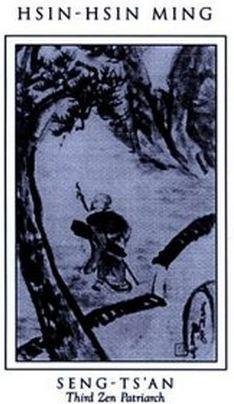comprehensive statement of Zen. The title is often translated as “Faith in Mind”, but some argues that the title should be translated as “Inscription on Relying on the Mind” or “Inscription of the Perfect Mind.” this translator chose the call it “Verses on the Perfect Mind.” The Hsin Hsin Ming has been much beloved by Zen practitioners for over a thousand years. It is still studied today in Western Zen circles. Download it here (15 illustrated pages):
Hsin-Hsin Ming
The “Hsin-Hsin Ming,” also known as “Faith in Mind,” is a poem attributed to the Third Chinese Chan (Zen) Patriarch, Sengcan. Composed in the 6th century, it is considered one of the earliest and most influential texts in Chan (Zen) Buddhism. The title, “Hsin-Hsin Ming,” can be translated as “Verses on the Faith Mind” or “Inscription on Faith in Mind.”
The poem is a succinct but profound expression of the non-dualistic nature of Chan Buddhism. It emphasizes the importance of a mental state of simplicity, openness, and non-attachment as the means to enlightenment and inner peace. The text guides the reader towards an understanding that distinctions such as right/wrong, good/evil, or self/other are products of the mind and can be transcended in the pursuit of enlightenment.
Key themes of the “Hsin-Hsin Ming” include:
- The Unity of Opposites: The poem discusses how apparent dualities are ultimately one, and the division is a result of human perception.
- Mind and Reality: It emphasizes that the nature of reality is shaped by the mind and that true understanding comes from a mind free of concepts and distinctions.
- The Way: The text often refers to “the Way,” a concept central to Taoism and Buddhism, indicating a path of harmony and naturalness, which leads to enlightenment.
- Non-Attachment: The poem advises against attachment to any particular view or doctrine, suggesting that such attachments hinder the path to enlightenment.
- Spontaneity and Naturalness: It encourages the practitioner to act in accordance with the natural flow of life, free from forced effort and artificiality.
The “Hsin-Hsin Ming” is highly regarded for its poetic beauty and profound philosophical depth. It is often studied and chanted in Zen monasteries and has been influential in the development of Zen Buddhist thought.

Thank yo for sharing and explaining this beautiful piece of work and earthy treasure… I want to know more and more. Of this style of living.